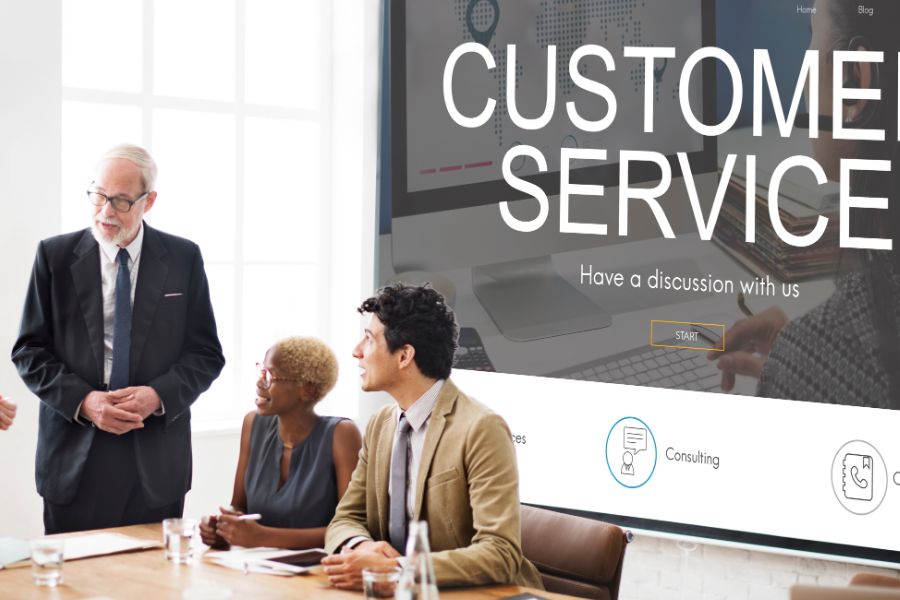Gone are the days when visiting a physical store was the only method to purchase a product. Customers today search for items 24 hours a day, 7 days a week, and want their orders to be completed how, when, and where they want them. What started off as a very straightforward fulfillment has evolved into omnichannel distribution for merchants. Let’s look at what omnichannel distribution means and why it’s such an essential strategy for any business.
What is omnichannel distribution?
In order to deliver a smooth shopping experience, omnichannel distribution is one-touch integration between operations and physical product streams across all channels. To put it another way, omnichannel distribution is a system that allows customers to complete purchases and get products through whatever channel they want (both online and offline).
Moreover, omnichannel distribution also includes not only the transportation of goods to retailers and customers, but also backward distribution principles, since customers can return items as well.
Omnichannel distribution can be divided into these common types:
- Buy online, pick up in-store (BOPIS): when a consumer places an order on your website and picks it up at your shop
- Buy online, dropshipping: a service that allows customers to buy something online and have it delivered to a certain location of their choice
- In-store purchase, delivery to home: when a consumer buys something at one of your physical businesses and asks you to deliver it to their specified location (mostly their home address)
- Dropshipping: the process of transferring products from a warehouse to another location (i.e. a business, a house address)
- Buy online, return in-store: when a consumer purchases a product online, but then decides they don’t like it and choose to return it to your physical shop
Benefits of omnichannel distribution
Facilitate omnichannel shopping experience
Omnichannel shopping is quite popular among customers nowadays. Research has shown that in 2019, 45% of consumers already choose to buy online and pick up in-store. With omnichannel shopping, it is simple to customize delivery options and have more opportunities to check items before buying. As a result, buyers can feel more secure and satisfied when making purchases.
In reality, customers may want to be able to review, shop, and purchase from your physical locations as well as your online sites. They’ll switch between multiple channels to make sure they’re receiving the greatest deal and making the purchase they desire. To address the need for omnichannel shopping, you’ll need a delivery system that works across all channels. This is when your store needs omnichannel distribution.
Provide quicker and more accurate delivery
The late and faulty shipping process is one of the most common reasons why customers stop purchasing in your store.
Customers can have a lot of reasons to not be satisfied with your delivery service. For example, they can’t wait more than a day for a package to deliver. This is understandable – because who knows they would need those items right away. If your store does not have a smooth-running delivery service, you may risk losing a lot of customers.
However, you can avoid this with the help of omnichannel distribution. All of your locations and channels will be unified into one omnichannel system. Customers can choose the option that is the most convenient for them. Thanks to technology, products will be shipped within the nearest distance and time. As a result, you’ll save a lot of resources and your customers will save time.
Boost sales
The store owner may get a large view of their business with a unified system, including how it operates and what is beneficial to the business. They will save time and money by not employing a reporting employee and collecting data from each channel independently.
Even better, omnichannel distribution facilitates product delivery and transfer over the smallest distance in the shortest time. As a result, your profit can rise, meaning that your omnichannel strategy is becoming profitable in exchange for the money you spend to operate it.
Challenges of omnichannel distribution
Inventory visibility
Inventory visibility entails providing clients with information on product availability and delivery schedules across all channels at the same time. Customers then have the option of purchasing things through an online or physical location.
In this way, the center of omnichannel is inventory management. This means that omnichannel businesses rely heavily on knowing the status of stock.
The solution for this challenge is quite straightforward: using systems with real-time synchronization. If you’re finding software like this, let us introduce you to ConnectPOS, a leading point of sale provider for omnichannel distribution. You can gain real-time updates on your inventory level and inform your customers about the availability of products in a timely manner.
Delivery speed
Omnichannel distribution has both a benefit and a drawback in terms of delivery speed. The necessity of boosting delivery speed stems from the fact that most consumers want their orders delivered the same day or within two days of ordering them. Therefore, delivery speed can become a problem if your business hasn’t planned thoroughly about this.
The solution to this problem is to provide them with a variety of shipping options as much as possible, including the delivery date and time. Emphasizing BOPIS can also be another good solution, since customers can decide on what day they want to receive their packages. In addition, you can automate the order fulfillment process, so that the system can determine the quickest way to deliver things to your clients. For example, it can assign the nearest warehouse to the customers’ address.
Consistent shopping experience
Since shopping now happens across various channels, many businesses struggle to provide a consistent shopping experience. This becomes a problem because employees working at different locations may not hold a deep understanding of your brand. Therefore, as a store owner, you should make sure the information and shopping experience in different channels are consistent and fit your brand image.
Have a clear plan about how you can demonstrate the values of your brand in different channels. In addition, providing staff training can also be a good solution to ensure that they can provide services that align with your businesses’ values.
Wrapping up
Consumers’ buying demands are increasing every day. It will be hard to predict whether or not any of these concepts will be applied successfully in the future. However, we should have the above-mentioned knowledge as a solid base about omnichannel distribution.
If you want to know more about ConnectPOS and our omnichannel features, don’t hesitate to contact our team!
►►► See our products: Magento POS, BigCommerce POS, Shopify POS, Woocommerce POS, NetSuite POS, Commercetools POS, Customize POS, Customer Experience Solution and Next-Gen POS




